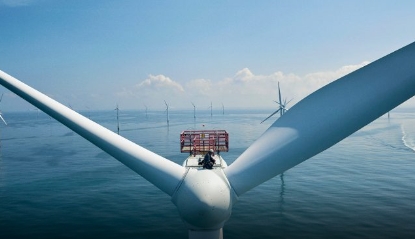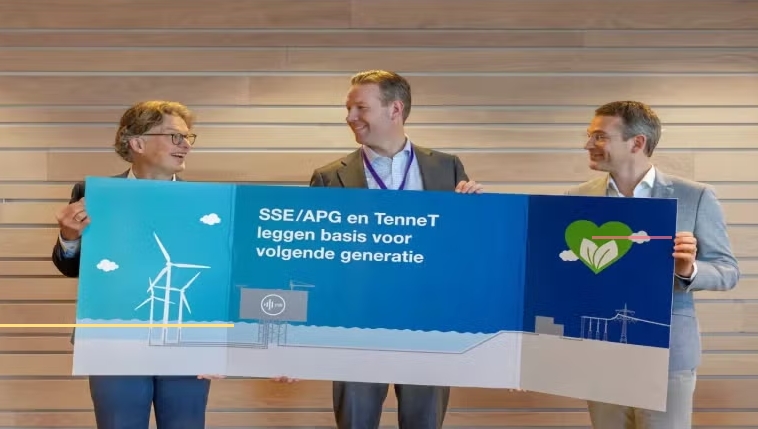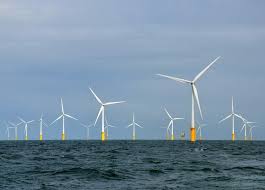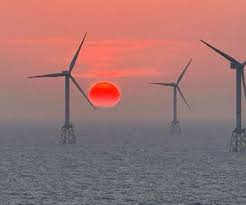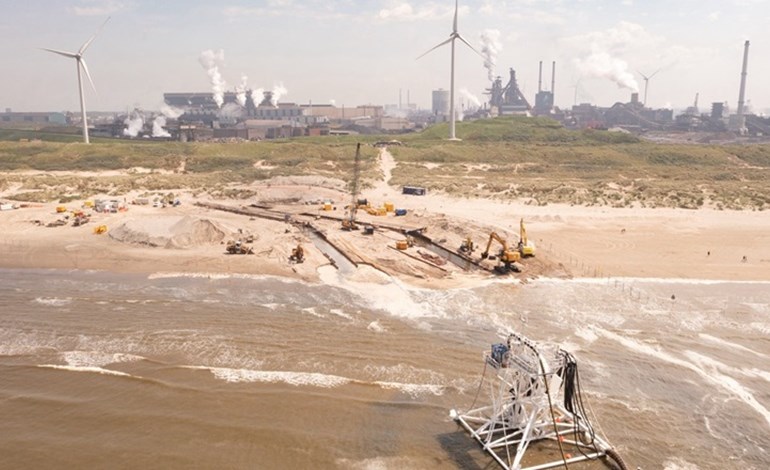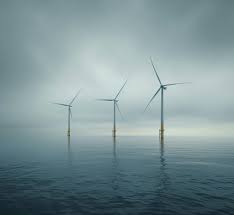A sense of urgency to keep global emissions of greenhouse gases from peaking beyond 2020 is bringing environmentalists to accept the oft-contentious carbon capture and sequestration (CCS) technology. “Undoubtedly, we have to move away from fossil fuels,” Nobel Peace Prize winner and climate scientist Rajendra Pachauri told me, “but given the fact that we need to urgently reduce emissions, we have to adopt options which certainly include [carbon dioxide removal] technologies as well as CCS options, with large scale forestry activities as well.”
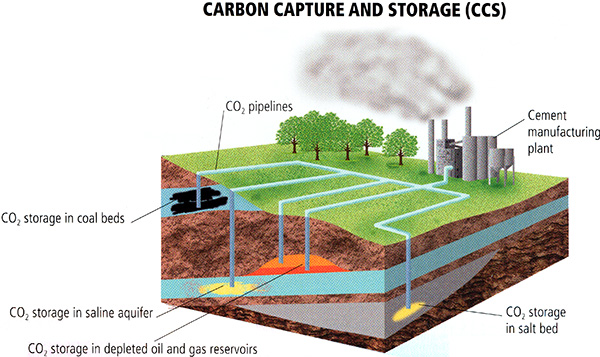
Pachauri, who was head of the United Nations Intergovernmental Panel on Climate Change (IPCC), cites the Fourth Assessment Report (AR4) of the IPCC which says global temperatures should not be allowed to climb more than 1.5 degrees Celsius above pre-industrial levels, and at worst, greenhouse gas emissions must peak on or before 2020 after which a sharp reduction in global emissions must occur.
Scientists who author the IPCC reports have endorsed CCS as a means to reduce emissions in three of its four pathways to keep global temperatures down.
But a large swath of environmentalists had long seen the technology as a means to stymie renewable energy expansion and continue to allow fossil fuels to meet global energy demand.
Time, Not Fossil, The Enemy on Climate
Kurt Waltzer, managing director of Clear Air Task Force in Washington, said, “Broadly, advocates who care about climate change as well as policymakers and industry are recognizing the fact that we need to consider all these options given the breadth and urgency of the challenge.”
Groups are looking for large-scale solutions that can be deployed quickly.
Even environmental advocacy giant Natural Resources Defense Council is on board with CCS. In its blog, NRDC said, “While we pursue the fastest possible transition to clean energy and away from dirty fuels, the scale and urgency of climate change demand that we also do everything possible to cut the dangerous carbon pollution from any fossil fuels that are used.”
NRDC describes CCS as “a way to capture carbon dioxide pollution that would otherwise be emitted by the fossil-fueled power plants and industries we still have, and permanently bury that pollution underground. These power plants and industrial facilities should not be allowed to dump their carbon pollution in the air for decades more.”
Concession in the Bastion of Contention
Clean Air Task Force recently signed a joint letter to members of Congress with a collection of energy groups, including ClearPath Action, to support legislation advancing CCS.
More than 80% of global energy use comes from coal, oil, and natural gas. Renewable energy, including hydropower and other renewables, provides only 11% of global energy, according to the latest annual BP plc statistical review of global energy.
“If we’re going to limit warming, [we need CCS],” Waltzer of Clean Air Task Force said.
ClearPath executives say they’ve seen an increase in non-governmental organizations joining business and industry groups, and bipartisan members in Congress supporting CCS.
Congress has held two dozen hearings across committees in the House of Representatives and three in the Senate on climate change since January.
“I’m not saying [Democrats and Republicans] agree on the final policy recommendation but this approach that we need all these technologies [to decarbonize] is becoming a place for common ground,” Waltzer said. And there’s a sense of urgency, he added.
In a hearing in July before the full House Energy and Commerce Committee, Armond Cohen, Executive Director of the Clean Air Task Force, appearing as a witness for the Democratic majority, said, “Zero-carbon electricity is critical, and its importance will grow as electricity use expands in transportation, heating, and industry. But it is insufficient. Some emissions sources, including high-temperature industrial process heat and long-distance transportation, will be very difficult if not impossible to electrify.”
Cohen told the committee, “Zero-carbon fuels (such as ammonia, hydrogen and synthetic hydrocarbons, are needed to decarbonize these activities. Emissions from direct industrial processes such as steel and cement are big too; to address them, we will need carbon capture and sequestration or new inherently carbon-free processes.”
Rich Powell, executive director of ClearPath Action, a Washington insider and a regular witness for congressional hearings, said, "We need an aggressive innovation policy for clean energy that will also facilitate breakthroughs relevant for the developing world. That absolutely means carbon capture and sequestration technology for coal and natural gas power plants.”
“There are strong bipartisan carbon capture policies that help commercialize cutting-edge clean energy technologies needed to reduce global emissions as quickly and cheaply as possible and we continue to see strong momentum in Congress,” Powell said.
According to the U.S. Energy Department and the Environmental Protection Agency, most greenhouse gas emissions—about 75%—blamed for climate change come from burning fossil fuels. Most of those emissions come from the transportation sector, a close second is the electric sector.
A number of U.S. utilities have promised deep cuts in carbon emissions from their fleets.
Four utilities—DTE Energy, Duke, Southern Company, and Xcel Energy—that collectively emit about a quarter of a gigaton of carbon emissions a year pledged to go “carbon-neutral” by 2050.
None, however, has pledged to stop burning fossil fuels.
This is the CCS market’s holy grail.
As of today, there are two CCS post-combustion industrial capture facilities—Boundary Dam and Petra Nova.
SaskPower’s Boundary Dam in Saskatchewan, Canada, became operational in 2016, and NRG Energy’s Petra Nova project near Houston began capturing carbon in 2017.
The Global CCS Institute, which tracks large-scale CCS projects globally, reports there are 51 CCS facilities globally in some stage of development which expect to capture 96 million tons of CO2 per year.
Nineteen facilities are in operation. Four are under construction, and 28 are in various stages of development. Eight are in the United States. Those involve ammonia and ethanol production, power, direct air capture, and integrated commercial storage hubs for CO2.
“It’s not just the energy industry. There are a variety of different industries that can compliment this [CCS] technology like the cement industry, steel making, pulp and paper, anything that has to do with manufacturing and growing the developing and developed world,” said Cory Channon, Special Assistant to the President of the International Brotherhood of Boilermakers, which represents 50,000 workers from industrial facilities in Canada and the United States.
The Boilermakers presented a video on CCS with the International CCS Knowledge Center during New York Climate Week, which ran concurrent with the United Nations General Assembly.
Trump Administration Supports CCS
U.S. Energy Department Deputy Assistant Secretary for Clean Coal and Carbon Management Lou Hrkman told global coal executives in Houston this summer that he plans to direct a large portion of his $200 million budget for CCS R&D. He wants the U.S. to be the leader in CCS development. Right now, the U.S. is arguably tied with Canada.
“We need to accelerate bringing our best ideas to commercial availability as quickly as possible,” Hrkman told the IEA Clean Coal Conference.
“Over the past 19 years, US taxpayers have invested nearly $4 billion in CCUS,” Hrkman said, using the abbreviation for carbon capture, use, and storage. “The payoff for those investments, carbon-free fossil energy, is just over the horizon. Soon it will be a technology option for regulators and companies to consider in their energy plans. We encourage other countries around the world to follow this example.”
Meanwhile, the IRS said this week it would issue guidance by year’s end on the much anticipated 45Q tax credit which energy companies have said is critical to begin investing in large-scale CCS projects.
According to the U.S. Energy Association, the 45Q tax credit was enacted in 2008 as an incentive for private construction and investment in CCUS projects. The 45Q tax credit offers up to $35/metric ton for captured carbon for enhanced oil recovery (EOR) and $50/metric ton for captured carbon stored in underground reservoirs. The credit includes direct air capture facilities.
The Energy Department’s Office of Fossil Energy is trying to lower the cost of capturing carbon. In 2012, it cost a company $80 to capture a metric ton of carbon emissions. Through research and advancements in technology, the cost is $50 per ton today. The current goal is to lower the cost to capture carbon to $30 per ton by 2023.
The tax credit currently makes companies whole, but eventually it would allow companies that capture carbon to make a profit.
Since 2008 more than 30 EOR injection sites have been permitted, which collectively have injected more than 13 million tons of CO2 into oil fields.
In order for companies to be eligible for 45Q tax incentives, they need to have begun construction of their CCS infrastructure by 2023.
Wall Street Responds To CCS
Multiple broad uses for the technology, and the CO2 captured, are driving investment as well.
In its November 2019 report, Fortune Global Insights said the CCS market is expected to grow about 14 percent to $5.6 billion by the end of 2026 from $2 billion in 2018. The market includes investment in the entire supply chain from capture components—compressors, separators—transport equipment and infrastructure, and storage, which is expected to drive the market.
Capturing carbon to improve industrial processes, such as cement production, is also expected to drive the market.
